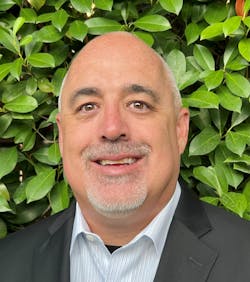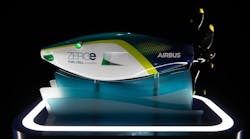By Kevin Palmer
MALVERN, Pa. – Manufacturers of commercial space and avionics systems sometimes turn to AEC-Q200 automotive-rated parts for non-mission-critical applications as a way of balancing quality and cost requirements.
When making this choice, however, they need to be aware that not all AEC-Q200-qualified parts are created equal; the standard defines test procedures while leaving acceptance criteria up to the user and the supplier.
Therefore, when engineers are considering AEC-Q200 parts in non-mission-critical applications, they need to take a careful look at each supplier's production processes, test conditions, test limits, and quality systems and certifications; this is the only way to ensure that components will deliver quality volume for the application.
Hi-Rel, COTS, mission critical, and non mission critical
The growth of electronic content in commercial space and avionics pushes to reduce costs -- particularly in high-volume non-mission-critical applications that have regular service or upgrades.
To meet demand and price pressures, component manufacturers have established high-yield and high-efficiency production processes. These processes, however, are based predominately on the requirements of the large volume commercial market, which don’t necessarily meet the requirements for commercial space or avionics applications.
At the same time, the aerospace, military, and space market needs products that provide consistently high performance in harsh environments over long periods.
Historically, this market has relied on very specific components that are manufactured to defined military or space standards, mission profile, or mil-spec drawing.
More recently some aerospace, military, and space companies have developed high-volume commercial innovations like electric vertical takeoff and landing (eVtol), unmanned aerial vehicles (UAV), low-Earth orbit satellites (LEOS), and electronic warfare (EW) equipment.
The requirements of these designs have challenged engineers to fully evaluate, and potentially consider, alternative-grade products to lower costs. However, even though these applications can be considered non mission critical and very budget-conscious, they demand significantly better performance and reliability than commercial-grade products due to risk and consequences of failure.
Nearly three decades ago, military systems designers explored using commercial off the shelf (COTS) components to reduce costs for non-critical applications. The problem was they didn't know the long term performance of COTS products. These parts did not receive additional lot testing to identify their infant mortality failure rate, unlike products based on the traditional established reliability of MIL-PRF or DLA drawings.
Engineers recognized a need for a product between COTS and mil-spec, so some manufactures released COTS-plus products that enabled engineers to test based on the end application. COTS-plus products have been successful, and have a place in the market, but are not widely available.
AEC-Q200-qualified and automotive-grade
The rapid adoption of automotive electronics is driving component developments. Under-the-hood applications have much higher temperature, cycle, humidity, vibration, and sulfur resistance requirements due to their proximity to the engine and exhaust system gases.At the same time, the cost of failures in recalls and liability requires reduced failure rates and longer lifespans. These qualities are attractive for the aerospace, military, and space markets.
It’s important to understand automotive-grade specifications. The Automotive Electronics Council (AEC) was established by Chrysler, Delco Electronics, and Ford in the early 1990s to create a common part qualification and quality standards system.
Testing procedures are well-defined within AEC-Q200, with sample sizes for test lots, but the specification notes that the measured parameters, values, and workings of each acceptance criteria for each test should be agreed upon between the user and supplier, rather than creating a specific standard for all producers.
Why is this important? One supplier can define the acceptance criteria for an operational life test at 1 percent, while another supplier can define the acceptance criteria at 5 percent. Therefore, although manufacturers publish data sheets noting AEC-Q200 qualification, the actual parts are not necessarily direct and exact equivalents.
Different production lines, manufacturing processes, and test methodologies can result in variations from supplier to supplier. This is especially true since manufacturers can define their own set of test limits to match their optimized production processes.
All AEC-Q200 Qualified Parts Are Not Created Equal
IATF-16949 is an important certification for automotive production and was created as the international standard for automotive quality management systems in production facilities. IATF-16949 emphasizes the development of a process-oriented quality management system that provides for continual improvement, defect prevention, and reduction of variations and waste in the supply chain.
Importantly, IATF-16949 certification is not required to produce AEC-Q200 qualified products. As a result, there may be important differences in the components produced in terms of comparative quality, reliability, and performance, depending on the specific manufacturer.
Due to the harsh environmental requirements of automotive applications, the stress test levels for AEC-Q200 parts are very demanding and even exceed military standards in some areas. However, some military requirements, such as established reliability, have load-life testing to 10,000 hours per part and cumulative test hours exceeding 96 million hours in a 12-month period (S failure rate), providing unrivalled performance / quality levels.
The basis of AEC-Q200 relies on process controls in high volume manufacturing and a statistical base at the sub-ppm level to achieve reliability goals. By comparison, military products incorporate a series of part treatments, screenings under accelerated conditions, and a post-production quality gate for 100 percent screening of production lots, in addition to process controls.
Another important consideration for use in high reliability applications is termination material. In commercial applications, tin-lead (SnPb) is strictly restricted. Most AEC-Q200 parts are similarly produced with pure SnPb-free terminations. However, some manufacturers can specifically offer SnPb terminations for AEC-Q200 devices to provide an alternative solution for the aerospace, military, and space market. This is especially important in applications that might suffer from tin whiskers. However, as this is only available on a few product series, and will be a much smaller production run, the cost for these components can be much higher than for standard lead (Pb)-free AEC-Q200 production parts.
Using AEC-Q200 parts in high reliability applications can potentially achieve the desired level of quality, but in some cases not at the volume or the level of specific testing required for the application. Engineers must evaluate their application requirements and environmental characteristics and should undertake an in-depth evaluation of each supplier in terms of their production process and product performance based on tests completed, conditions of the test, test limits for the product, and quality systems and certifications in place. All this information needs to be considered when selecting the most appropriate solution.
Kevin Palmer is director of business marketing at Vishay passives - Americas at Vishay Intertechnology Inc. in Malvern, Pa.



